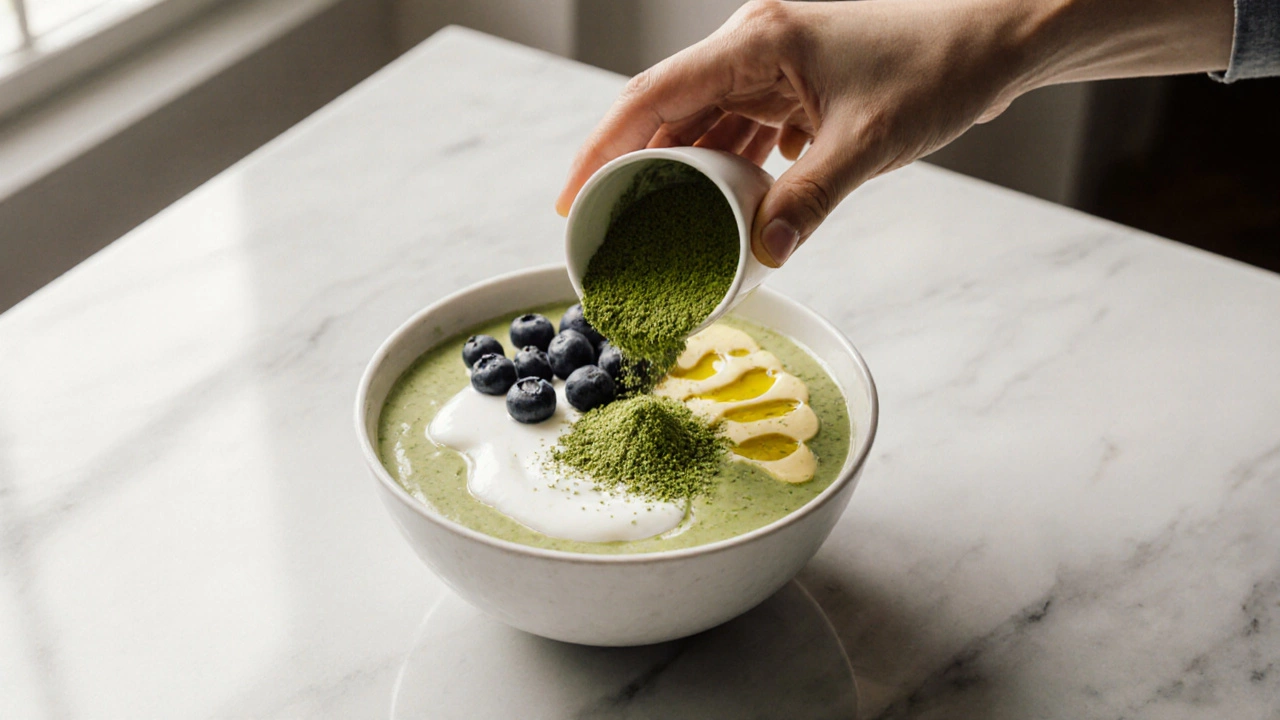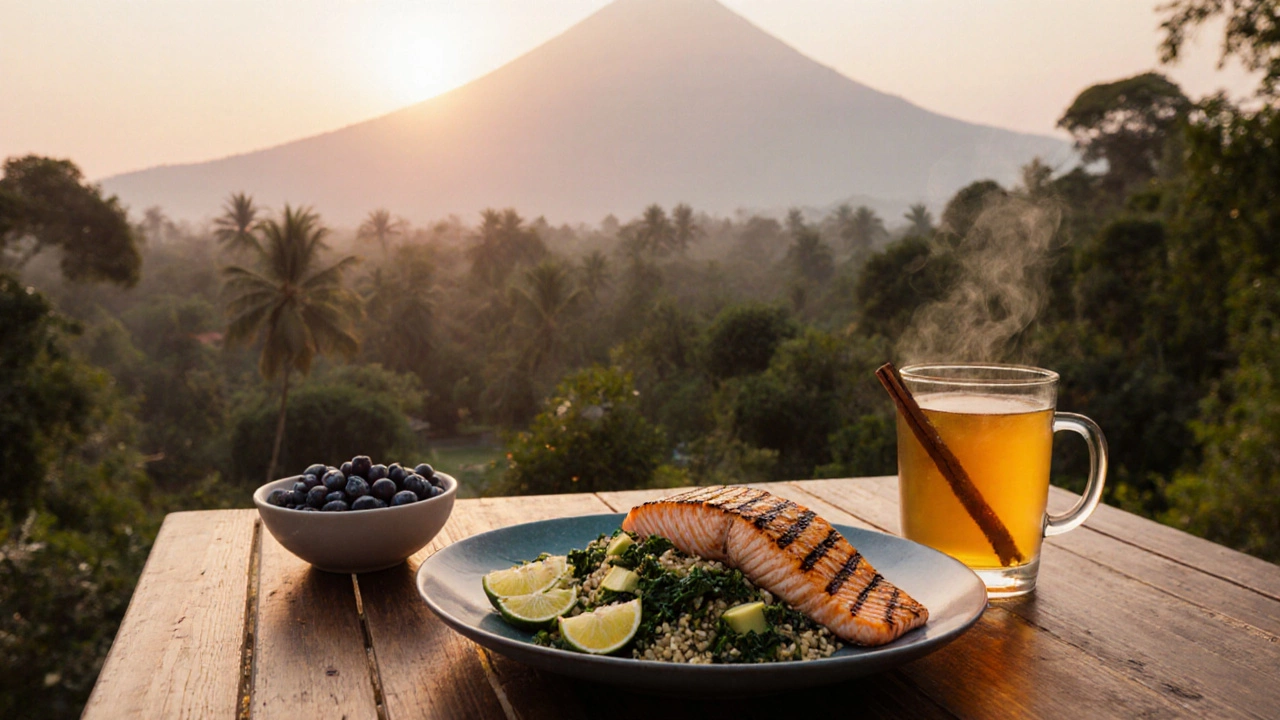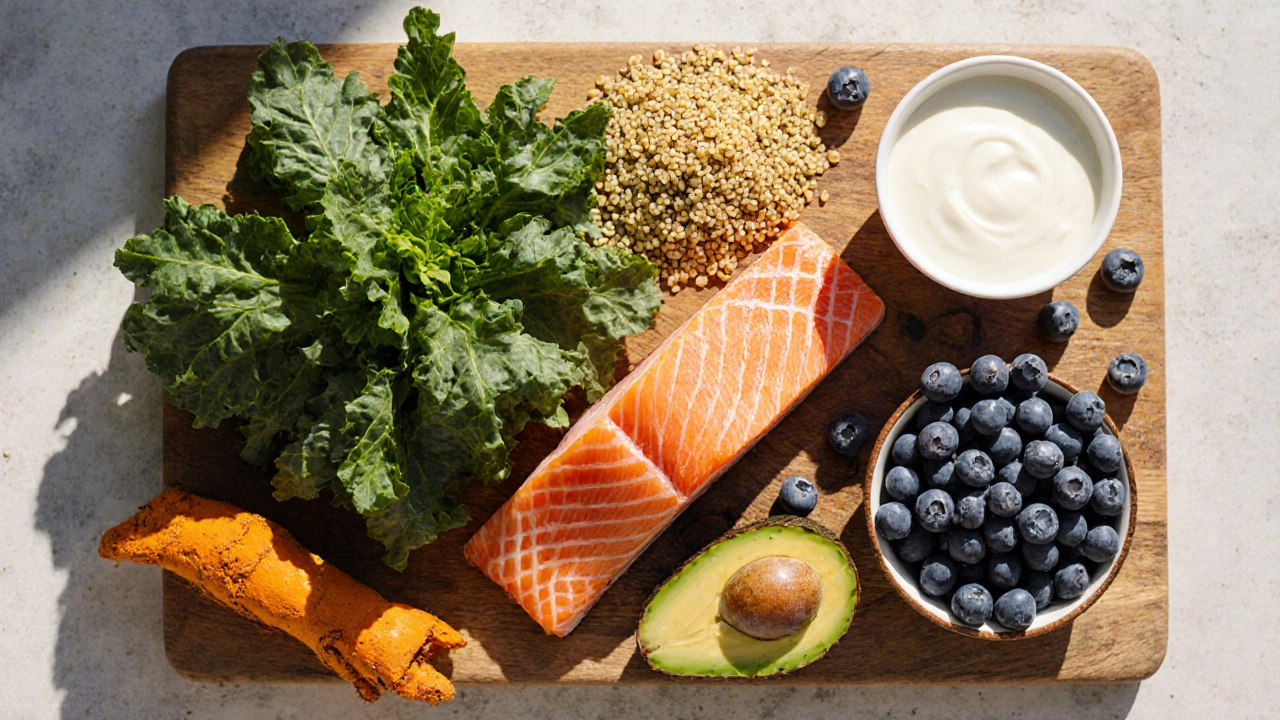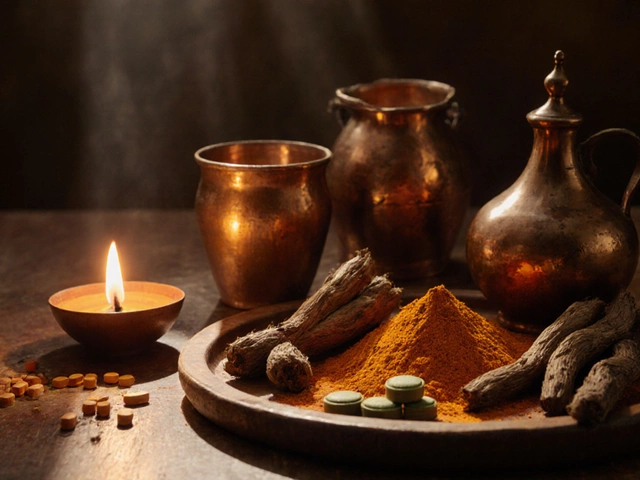Nutrient Calculator
Daily Nutrient Calculator
Calculate how much of the world's healthiest foods you need to meet your daily nutrient requirements.
Your Nutrient Needs
Tip: These foods provide more than just single nutrients. For optimal health, include a variety of the world's healthiest foods in your diet.
When people ask healthiest food, they’re hunting for the one that packs the most nutrients, supports disease prevention, and boosts overall vitality. The answer isn’t a single grain or fruit - it’s a handful of nutrient‑dense powerhouses that score high on every health metric.
How We Judge a Food’s Health Power
First, let’s lay out the criteria we used to rank the world’s healthiest foods. We looked at:
- Nutrient density: grams of vitamins, minerals, and essential fatty acids per calorie.
- Antioxidant capacity: measured by ORAC (Oxygen Radical Absorbance Capacity) scores.
- Protein quality: completeness of essential amino acids.
- Bioavailability: how well the body absorbs the nutrients.
- Health outcomes: scientific evidence linking the food to reduced risk of chronic diseases.
We also considered cultural accessibility, because a truly healthy diet should be practical for travelers and locals alike - a key point for medical tourism destinations that promote wellness retreats.
Meet the Top Contenders
Below are the foods that consistently outperformed the criteria.
Moringa is a fast‑growing tree native to South Asia. Its leaves contain up to 30% protein by weight, a full spectrum of vitamins A, C, and E, and minerals such as calcium, iron, and potassium. Studies published in the Journal of Food Science show that moringa leaf powder can improve blood lipid profiles and lower blood pressure when consumed daily.
Quinoa is a gluten‑free seed from the Andes. It offers all nine essential amino acids, making it a complete protein source. The grain delivers high levels of magnesium, phosphorus, and folate, which support heart health and prenatal development.
Kale belongs to the Brassica family. One cup provides more vitamin K than any other vegetable, a crucial factor for bone health and blood clotting. Its glucosinolate compounds have been linked to reduced cancer risk in several epidemiological studies.
Salmon (especially wild‑caught) supplies omega‑3 fatty acids EPA and DHA, which are essential for brain function and inflammation control. Regular salmon intake is associated with lower incidence of heart disease, as highlighted by the American Heart Association.
Blueberries are tiny berries with a sky‑high ORAC score. Their anthocyanins protect cellular DNA from oxidative damage, helping to maintain cognitive health as we age.
Turmeric contains curcumin, a powerful anti‑inflammatory compound. Clinical trials have shown curcumin can ease symptoms of arthritis and may slow tumor growth when combined with standard therapies.
Avocado offers monounsaturated fats, potassium, and lutein. Its creamy texture makes it a versatile base for salads, smoothies, and even desserts while supporting heart health.
Greek Yogurt provides probiotic cultures, calcium, and high‑quality protein. Regular consumption helps balance gut microbiota, a factor increasingly linked to mental health and immune function.
Quick Comparison Table
| Food | Calories (per 100 g) | Protein (g) | Key Vitamins & Minerals | ORAC Score |
|---|---|---|---|---|
| Moringa leaves | 35 | 9.4 | Vitamins A, C, E; Calcium, Iron, Potassium | 3,300 |
| Quinoa (cooked) | 120 | 4.4 | Magnesium, Phosphorus, Folate | 1,260 |
| Kale (raw) | 49 | 4.3 | Vitamin K, Vitamin C, Calcium | 2,980 |
| Salmon (wild) | 206 | 22.1 | Omega‑3 DHA/EPA, Vitamin D, Selenium | 1,040 |
| Blueberries | 57 | 0.7 | Vitamin C, Vitamin K, Manganese | 9,620 |
| Turmeric (ground) | 312 | 9.7 | Vitamin B6, Iron, Manganese | 2,540 |
| Avocado | 160 | 2.0 | Potassium, Vitamin K, Folate | 1,020 |
| Greek Yogurt (plain) | 59 | 10.0 | Calcium, Vitamin B12, Probiotics | 720 |

How to Add These Superfoods to Your Everyday Meals
Travelers often wonder how to keep a nutrient‑rich diet while moving between time zones and cuisines. Here are simple, low‑effort ideas:
- Morning boost: Blend a handful of moringa leaf powder, blueberries, and Greek yogurt into a smoothie. The combo delivers protein, antioxidants, and gut‑friendly probiotics.
- Lunch upgrade: Toss quinoa, kale, and diced avocado with a drizzle of olive oil and lemon juice. Add grilled salmon for omega‑3 power.
- Snack smart: Keep a small container of raw turmeric slices or a turmeric‑infused tea. It’s an easy anti‑inflammatory pick‑me‑up.
- Dinner delight: Steam kale alongside a salmon fillet, finish with a squeeze of lime and a sprinkle of sea salt. Pair with a side of lentil soup for extra fiber.
These dishes are portable, budget‑friendly, and can be prepared in most hotel kitchens or even a simple microwave.
Medical Tourism Angle: Wellness Retreats That Feature These Foods
Many wellness resorts in Bali, Costa Rica, and Kerala design menus around nutrient‑dense ingredients. For example, a popular Bali retreat sources local moringa leaves for daily salads, while a Kerala Ayurvedic center serves turmeric‑laden coconut milk soups. Choosing a destination that integrates these foods can amplify the health benefits of your vacation.

Potential Pitfalls & How to Avoid Them
Even the healthiest foods can cause issues if over‑consumed.
- Moringa: Excessive iron can interfere with thyroid function for some people. Stick to 1‑2 teaspoons of powder per day.
- Salmon: Watch for mercury content in farmed varieties; opt for wild‑caught when possible.
- Turmeric: High doses may upset the stomach; combine with black pepper to improve absorption and reduce gastrointestinal irritation.
Balance is key - think of these foods as part of a varied plate, not a single‑item diet.
Quick Checklist for a Healthier Plate
- Include at least one leafy green (kale, moringa) daily.
- Add a source of omega‑3 (salmon, chia) 2‑3 times per week.
- Incorporate antioxidant berries (blueberries) as snacks.
- Season meals with anti‑inflammatory spices (turmeric, black pepper).
- Choose probiotic‑rich dairy (Greek yogurt) or plant‑based alternatives.
Frequently Asked Questions
Is there one food that’s definitively the healthiest?
No single food covers every nutrient need. The healthiest diet is a diverse mix of nutrient‑dense foods like moringa, quinoa, kale, and salmon.
Can I get the same benefits from supplements?
Supplements can fill gaps, but whole foods provide fiber, phytonutrients, and synergy that pills lack. Aim for food first, supplement second.
How much moringa should I consume daily?
Start with a half‑teaspoon of dried leaf powder mixed into a smoothie. Gradually increase to one teaspoon, not exceeding two teaspoons per day.
Are these foods safe for pregnant women?
Most are safe and beneficial-especially kale, quinoa, and Greek yogurt. However, limit high‑dose turmeric supplements and consult a doctor about fish intake to avoid excess mercury.
Where can I find moringa while traveling?
Moringa is common in Indian, African, and Southeast Asian markets. Health‑focused cafés and wellness resorts often feature it in teas, powders, or fresh leaves.
By incorporating these top‑ranked foods into your meals-whether at home or on a medical‑tourism retreat-you’ll give your body a robust supply of the nutrients it needs to thrive.





